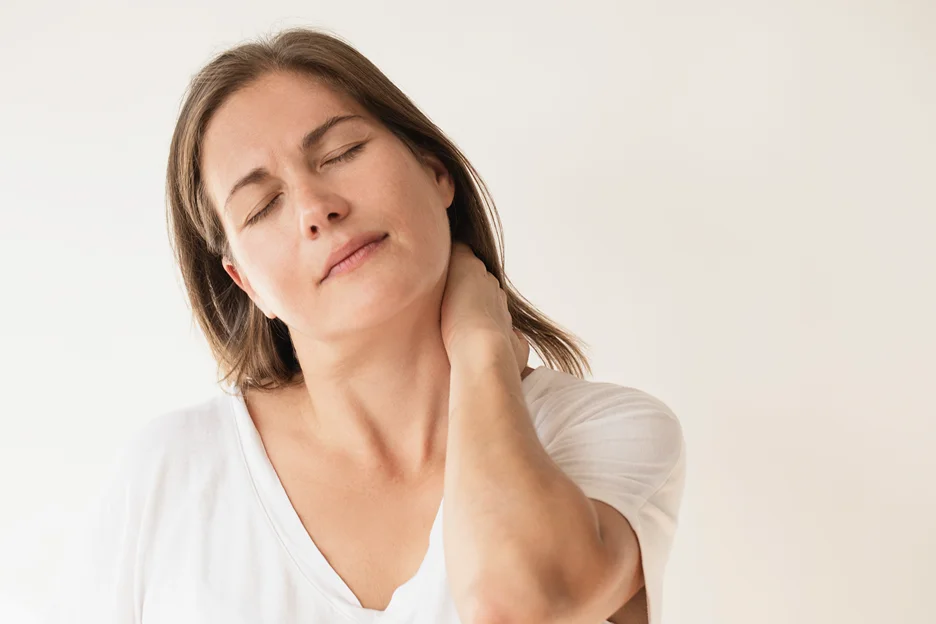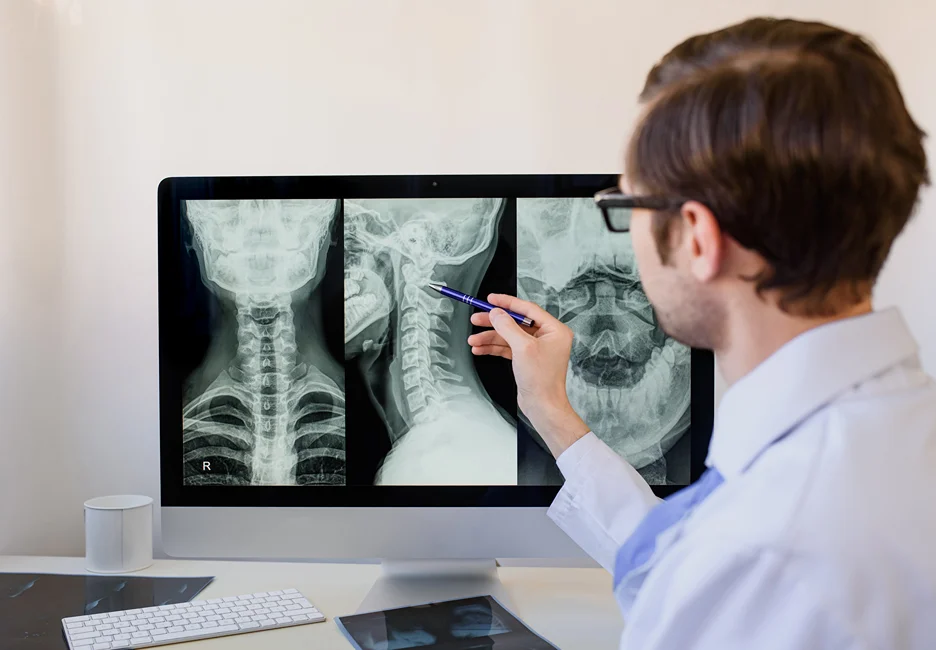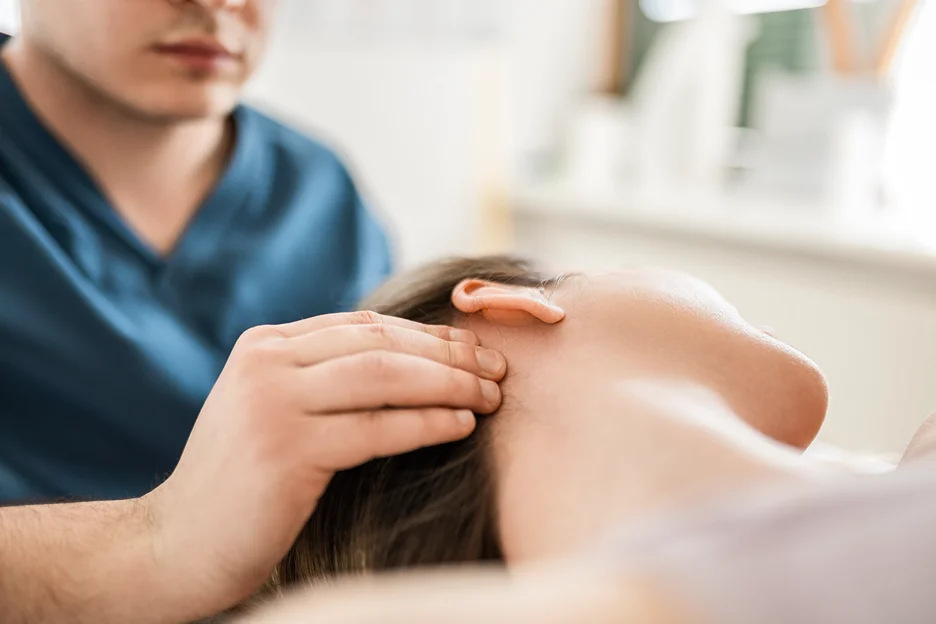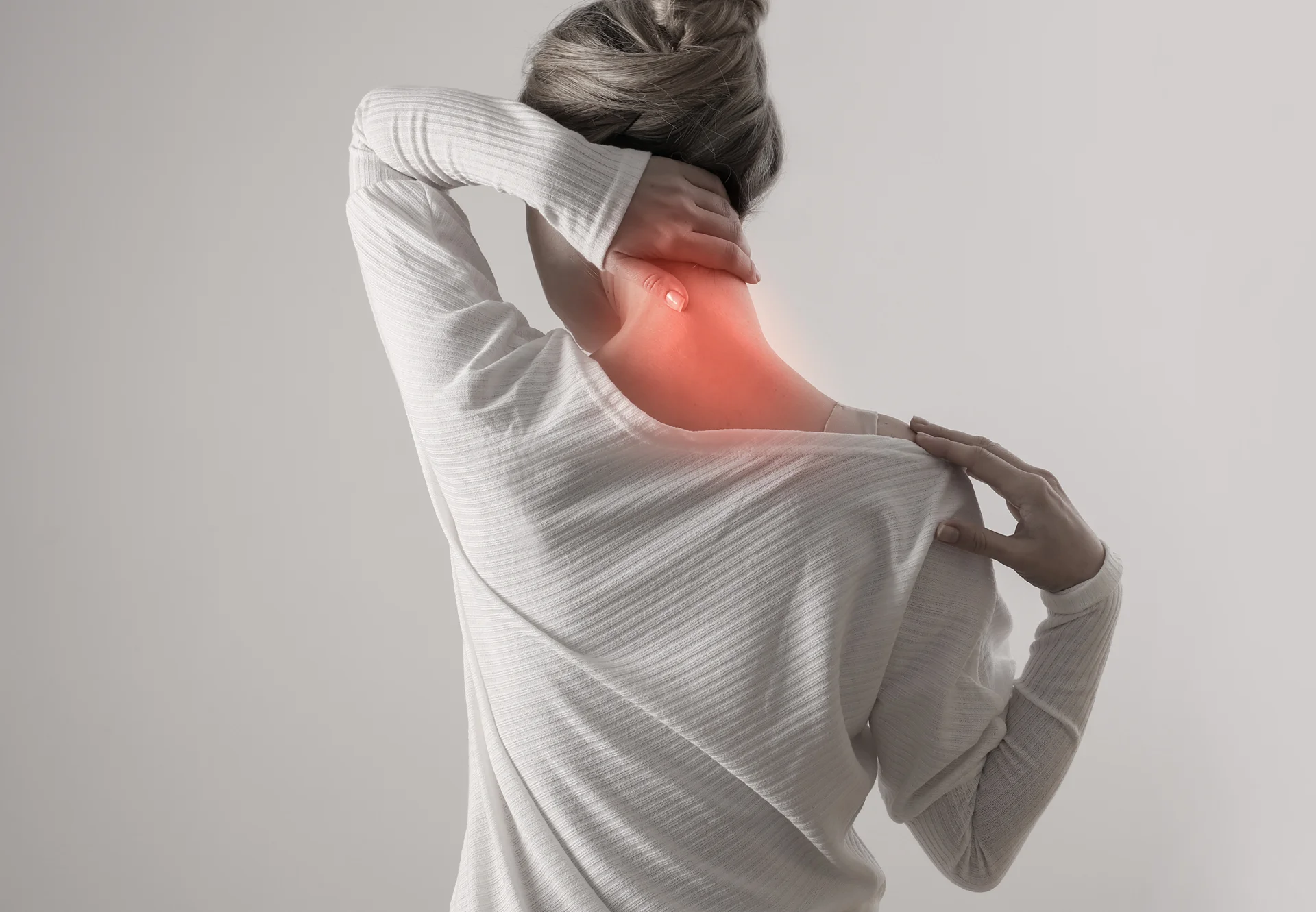How to Manage Cervical Osteoarthritis
If you wake up each morning with chronic neck stiffness and pain, your quality of life is probably suffering. Turning your head causes a grinding sensation in your neck joints.
Nothing seems to give lasting relief. You may have cervical osteoarthritis – a common age-related condition causing progressive damage to the bones and discs in your neck.
Don’t just live with the pain and loss of mobility. Read on to learn what really causes neck arthritis, how it’s diagnosed, and the most effective medical and natural treatments to help manage your symptoms.
There are steps you can take to actively improve joint health and get back to enjoying life!
What is Cervical Osteoarthritis and What Causes It?

Cervical osteoarthritis, also known as neck arthritis or cervical spondylosis, refers to age-related wear and tear affecting the spinal disks and joints in the neck. It is caused by the normal degeneration of these structures over time. Specifically:
- Cervical osteoarthritis involves degeneration of the cervical spine joints and discs in the neck area (C1-C7). This can lead to pain, stiffness, and reduced mobility.
- It is a degenerative disorder of the neck vertebrae and discs worsened by inflammatory reactions in the body.
- As people age, the rubbery discs between the neck vertebrae start to break down and lose hydration. This causes them to shrink and limits their ability to act as shock absorbers.
- With less disk cushioning, the vertebral bones start to rub together causing bone-on-bone contact that results in pain and inflammation. Bony projections called bone spurs may also form.
- It’s the general term for progressive age-related wear and tear affecting the cervical spinal discs and facet joints in the neck. As these structures degrade, signs and symptoms of arthritis can develop.
The primary cause is aging itself. By middle-age, the discs lose flexibility and shock absorbing capabilities, setting off a cascade of degenerative changes. Other contributing factors include:
- Genetics
Some studies indicate osteoarthritis can run in families. Certain genetic traits may predispose people to developing neck arthritis.
- Wear and Tear
Years of repetitive motions and activities that place stress on the cervical spine contribute to progressive joint damage over time.
- Inflammatory Autoimmune Factors
In some cases, inflammatory autoimmune factors may play a secondary role in the degenerative processes of cervical osteoarthritis.
Cervical Osteoarthritis Expertise at Your Fingertips – Join Kaly for Personalized Care Plans
Symptoms of Cervical Osteoarthritis
Cervical osteoarthritis causes a range of characteristic symptoms that can vary in severity. Common symptoms include:
| Symptom | Description |
| Neck Pain | People with neck arthritis often experience chronic pain in the neck area which may radiate to the shoulders or upper back. It’s frequently described as an aching or stiffness in the neck. |
| Reduced Neck Mobility | Turning the head or tilting the neck may be painful. The normal range of motion becomes limited. |
| Headaches | Changes to the cervical spine can trigger headaches. These tend to start in the neck and head area. |
| Grinding Sensation | A crunching or grinding feeling when moving the neck. This results from the damaged bones and cartilage rubbing together. |
| Arm Pain or Numbness | In advanced cases, bone spurs can press against nerves causing tingling, numbness or pain in the shoulders, arms and hands. |
The hallmark symptoms include progressive neck pain and stiffness that worsens with age. Pain levels can fluctuate but often deteriorate over time. Catching symptoms early provides the best opportunity to slow progression.
How to Diagnose Cervical Osteoarthritis

There is no single definitive test for cervical osteoarthritis. Doctors synthesize findings from a person’s symptoms, physical examination, and imaging tests to arrive at a diagnosis. Key aspects include:
Medical History
The doctor will ask detailed questions about the patient’s symptoms, including when the neck pain started, its exact location, whether it radiates to other areas, and any factors that make it better or worse. Understanding the precise nature and duration of symptoms provides important clues.
Physical Examination
The physician will thoroughly examine the neck by palpating the cervical spine to check for tenderness, crepitus (a cracking or grinding sensation), reduced range of motion, and abnormal curvature. A neurological exam of the upper extremities will also be done to check muscle strength, reflexes, and sensation to rule out cervical radiculopathy or myelopathy.
Imaging Tests
Imaging such as x-rays, CT scans, or MRI can visualize the extent of damage and osteoarthritic changes in the cervical joints and discs. However, they are not required for diagnosis in straightforward cases. Imaging is more commonly used in moderate to severe cases to rule out other spinal problems.
Differential Diagnosis
Based on the clinical exam, the doctor considers and rules out other possible causes of neck pain such as trauma injuries, tumors, infection, inflammatory arthritis, or non-osteoarthritic joint disease. Cervical osteoarthritis is a “diagnosis of exclusion” after these other conditions are eliminated.
Diagnostic Criteria
To confirm cervical osteoarthritis, the doctor synthesizes findings from the medical history, physical exam, imaging tests, and differential diagnosis. This comprehensive approach allows them to apply diagnostic criteria and have a high degree of certainty in the diagnosis.
End the Guessing Game – Get a Proper Cervical Osteoarthritis Diagnosis from Experts When You Sign Up for Kaly.
Treating Cervical Osteoarthritis

From medications to surgery, your doctor has an array of options to help relieve osteoarthritis symptoms. Treatment aims to reduce pain and inflammation, improve joint mobility, strengthen neck muscles, and slow the condition’s progression.
Conservative Therapies for Neck Arthritis
For most people with cervical osteoarthritis, doctors recommend trying these more conservative therapies first:
| Treatment | Description |
| Over-the-Counter Medications | Oral OTC anti-inflammatories like ibuprofen (Advil, Motrin) or naproxen (Aleve) can alleviate inflammation and pain. Topical creams like capsaicin may also provide relief when applied to the neck. |
| Hot/Cold Therapy | Applying a heating pad or ice packs helps relieve cervical osteoarthritis pain short term. Use heat before activity to loosen up. Use ice after activity to reduce inflammation. |
| Cervical Traction | This involves gently pulling on the neck to relieve pressure on compressed nerves and joints. It’s done using an at-home traction device or by a chiropractor or physical therapist. |
| Chiropractic Adjustments and Massage | Spinal manipulation and massage help improve mobility and reduce musculoskeletal neck pain. |
| Physical Therapy (PT) | PT focuses on stretching, strengthening exercises, and modalities like ultrasound or electrical stimulation to relieve osteoarthritis symptoms. |
| Steroid Injections | Cortisone shots can temporarily reduce cervical inflammation and pain. However, their long term use is limited. |
| Lifestyle Modifications | Making adjustments to your posture, workstation setup, sleep position, and activities can help take pressure off the cervical joints. |
Your doctor may try combinations of these approaches first to maximize relief while avoiding risks of surgery. Home remedies like heat or ice therapy can supplement medical treatment.
When Surgery May Be Necessary
If conservative treatments fail to adequately manage pain and dysfunction after 6-12 weeks, your doctor may discuss these surgical options:
- Spinal Fusion – This “welds” together vertebrae for stabilization using bone grafts and metal implants. It permanently limits mobility but can relieve pinched nerves.
- Disc Replacement – Artificial cervical discs can be implanted to restore height and mobility at defective levels. This is less invasive than fusion.
- Discectomy – Removing damaged cervical disc material can decompress pinched nerves causing radicular arm pain.
- Bone Spur Removal – Excising bone spurs via foraminotomy or laminoplasty procedures can take pressure off affected nerves.
These surgeries aim to remove sources of nerve irritation and reinforce the cervical spine. They involve risks, lengthy recovery, and high medical costs.
Thinking About Cervical Osteoarthritis Surgery? Connect with an Expert at Kaly Today.
Natural and Alternative Therapies for Neck Arthritis Relief
Some patients look to complementary and alternative medicine for conservative symptom relief from neck arthritis.
Omega-3 fatty acid supplements, derived from fish oils, may have anti-inflammatory effects that help soothe arthritis pain. The natural joint supplements glucosamine and chondroitin appear to promote cartilage repair with moderate benefits for osteoarthritis sufferers.
Curcumin, found in the spice turmeric, has antioxidant and anti-inflammatory properties that may protect joints. It can be taken as a supplement.
Acupuncture involves inserting fine needles along meridian points in the neck to provide pain relief based on traditional Chinese medicine principles. Early research on acupuncture for neck arthritis is somewhat promising.
Gentle yoga and tai chi incorporate low impact, controlled movements that may help improve neck mobility and strengthen supporting muscles, but proper form is critical.
Topical creams containing willow bark provide a compound similar to aspirin that may mildly decrease arthritis pain when applied to the neck area. Heated creams with ingredients like capsaicin or methyl salicylate can also offer temporary relief when rubbed on the neck.
Patients should always consult their doctor before trying supplements or alternative treatments, especially with other medical conditions. While these remedies lack extensive scientific proof, some patients report beneficial results from these conservative therapies.
Relieving Neck Pain for Improved Quality of Life

Dealing with chronic neck pain and reduced mobility can be frustrating. But there are steps you can take to manage osteoarthritis symptoms and maintain an active lifestyle.
Work closely with your healthcare providers to explore both medical and natural approaches to living well with cervical osteoarthritis. Relief may be within your reach!
Consider joining Kaly for 24/7 access to doctors, health coaching, personalized treatment plans, and discounts on neck arthritis care. Convenient virtual and in-person visits help you get control of stubborn neck pain. Sign up today to start improving your quality of life!
